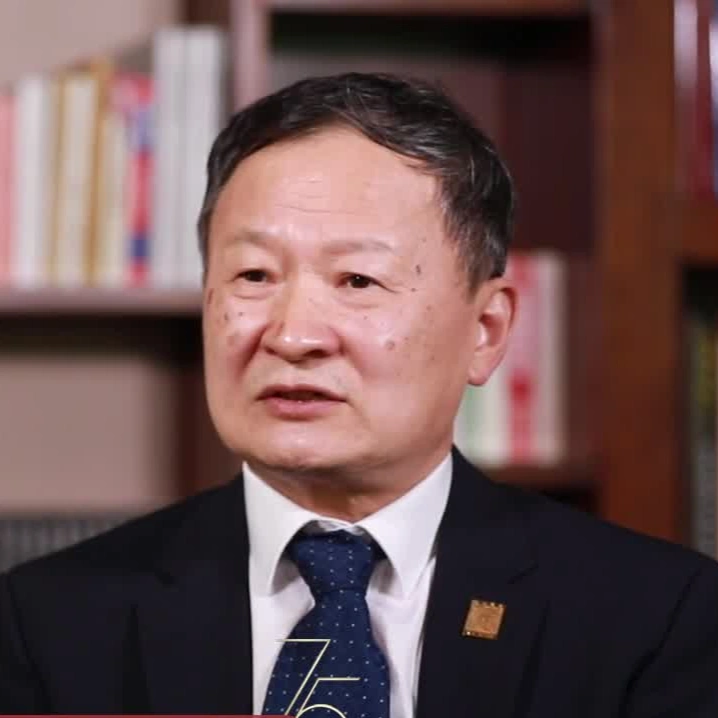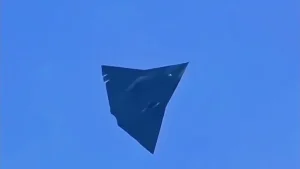This China Sanction Will Ground USAF’s F-35

On October 10, China announced a new sanction list targeting U.S. arms companies, which includes eight companies and ten of their executives. These individuals will no longer be able to obtain any Chinese visas, including entry to Hong Kong and Macau. Their assets in China have been frozen, and they are prohibited from engaging in any transactions or collaborations with companies or individuals in China—a blow that could be big trouble for the U.S. Air Force.
This is because David Sutton, Director of Asia-Pacific at Lockheed Martin, is on the sanctions list. For the U.S. Air Force, Lockheed Martin’s F-35 fighter jets are expected to be their primary stealth aircraft of the future. Over 1,000 have already been ordered, and eventually, more than 3,000 will be supplied to the U.S. and its allies.

The F-35 was intended to be the next showcase product, following the F-22 to rival China’s J20 stealth fighter jets. However, internal reviews revealed that even the F-35’s ability to fly was actually built on the covert use of Chinese-made parts. Now, with China’s sanctions, this practice can no longer be hidden.
According to a 2022 report by POLITICO, the secret was uncovered by the Defense Contract Management Agency in August 2022, when it was discovered that Chinese-made parts were magnets contained in the F-35’s turbomachine pumps. Lockheed Martin spokesperson Laura F. Siebert, in an interview with The War Zone magazine, acknowledged that the turbomachine is part of the Integrated Power Package (IPP) – the primary component of the electric power and thermal management system. Siebert explained that the IPP supplies electrical power to start the engine and provides conditioned bleed air for cooling aircraft systems. In other words, if this critical component fails, the F-35 could blackout mid-flight or even fail to start.
After this secret was revealed, the Pentagon’s response was interesting. On the one hand, they seemingly couldn’t accept that such a crucial component relied on Chinese manufacturing, due to a concern about compliance with the Defense Federal Acquisition Regulation Supplement, so, they immediately halted deliveries of the F-35.
On the other hand, according to POLITICO, the Pentagon announced in October 2022 that the investigation had concluded, and deliveries resumed, stating that the new batches of jets no longer contained Chinese-made parts. As for the aircraft already delivered with Chinese components, William LaPlante, the undersecretary of defence for acquisition and sustainment, signed a national security waiver, meaning the Defense Department would not replace the parts in those aircraft.

Now, by reviewing the F-35 crash archives in Air&Space Forces Magazine, we can see that prior to October 2020, there were only two recorded incidents involving the F-35 in the U.S. However, since October 2020, there have been seven additional incidents, with the failure rate tripling.
The most recent F-35 crash occurred on May 28, 2024, at Kirtland Air Force Base in New Mexico. According to ABC, the pilot was flying the jet on behalf of the Defense Contract Management Agency. A Lockheed Martin spokesperson said the jet was being transferred from Fort Worth, Texas, where the company’s F-35 factory is located, to Edwards Air Force Base, Calif., for modifications and testing. The stop at Kirtland was made to refuel.
The aircraft encountered issues shortly after takeoff, specifically with the vertical takeoff and landing system. Air&Space Forces Magazine reported that the accident bears a few similarities to the crash of an F-35B at Lockheed Martin’s facilities in Fort Worth, Texas, in December 2022. According to Wikipedia, this was the first time an issue with the vertical takeoff and landing system had been reported for the F-35.
Fortunately, the pilot survived thanks to the ejection seat. But the person he should be thanking is not American engineers but British, as the F-35’s ejection seat is manufactured by The British company Martin-Baker Aircraft Company Limited.
Now, regardless of whether the U.S. Air Force regrets its decision to phase out Chinese-made parts, this sanction list launched by China will help them complete the process. Lockheed Martin will no longer be able to access its funds in China or directly procure any parts from the country.
Chinese strategist and retired Air Force Senior Colonel, Professor Wang Xiangsui, highlighted that this incident shows how, in a globalized world, both national security and supply chain security are interconnected. Opening Pandora’s box by pushing for decoupling and breaking supply chains will ultimately compromise one’s own security.
Moving forward, we may observe further changes in the reliability of F-35s delivered after October 2020. However, as long as the Pentagon doesn’t replace the ejection seats with American-made ones, at least U.S. pilots should still be able to survive.
Editor: Charriot Zhai
https://www.mfa.gov.cn/wjbxw_new/202410/t20241010_11504846.shtml
https://www.politico.com/news/2022/10/07/pentagon-f-35-deliveries-chinese-materials-00060962
https://www.twz.com/f-35-deliveries-halted-after-chinese-alloy-discovered-in-key-component
https://www.airandspaceforces.com/tag/f-35-crash/
https://www.airandspaceforces.com/air-force-pilot-f-35b-crash-kirtland/
https://abcnews.go.com/US/military-aircraft-crashes-off-airfield-albuquerque-airport/story?id=110622814
https://en.wikipedia.org/wiki/List_of_accidents_and_incidents_involving_the_Lockheed_Martin_F-35_Lightning_II




